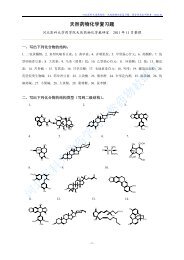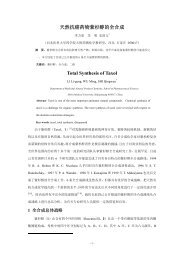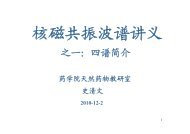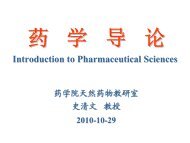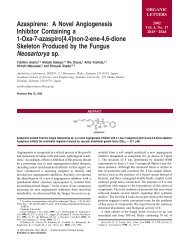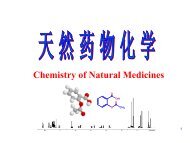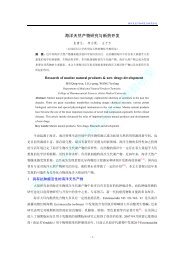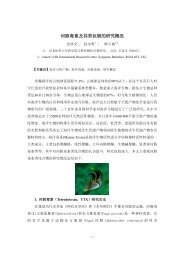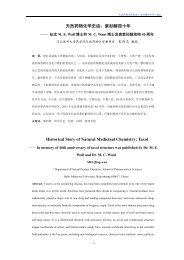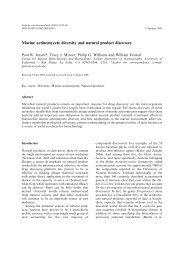Total Synthesis Highlights
Total Synthesis Highlights
Total Synthesis Highlights
You also want an ePaper? Increase the reach of your titles
YUMPU automatically turns print PDFs into web optimized ePapers that Google loves.
The macrolactone leucascandrolide A (4), isolated from the calcareous sponge L. caveolata, has<br />
both cytotoxic and antifungal activity. The key step in the synthesis of 4 reported (J. Org. Chem.<br />
2007, 72, 5784.) by Scott D. Rychnovsky of the University of California, Irvine, was the<br />
stereoselective condensation of the aldehyde 1 with the allyl vinyl ether 2 to give 3.<br />
The cyclic ether of 1 was assembled from the crotyl addition product 5. Tandem Ru-catalyzed<br />
metathesis / hydrogenation converted 5 to the lactone 6. Reduction of 6 to the lactol followed by<br />
activation as the acetate gave 7, axial-selective condensation of which with the enol ether 8<br />
delivered the enone 9. Diastereoselective Itsuno-Corey reduction of 9 followed by protecting<br />
group exchange and oxidation then gave 1, containing four of the eight stereogenic centers of<br />
leucascandrolide A (4).<br />
The vinyl ether 2 was readily prepared from the corresponding homoallylic alcohol. Condensation<br />
of 1 with 2 involved Lewis acid activation of the aldehyde, addition of the resulting carbocation to<br />
the vinyl ether, and cyclization with trapping by bromide ion. In this process, the other four of the<br />
eight stereogenic centers were assembled. Three of those centers were formed in the course of the<br />
reaction. While stereocontrol was not perfect, the route is pleasingly succinct, so practical<br />
quantities of diastereomerically pure 3 could be prepared.<br />
To complete the synthesis, the secondary alcohol of 3 was methylated. Selective desilyation of the<br />
primary alcohol followed by oxidation and desilylation then set the stage for the Mitsunobu<br />
macrolactonization. The intermediates in the Mitsunobu reaction are such that the lactonization<br />
can proceed with either inversion of absolute configuration at the secondary center, or retention.<br />
While the usually-employed Ph 3 P gave the lactone with retention of absolute configuration, Bu 3 P<br />
led to clean inversion.



